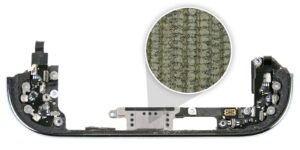
The launch of the Caira camera marks a significant advancement in photography technology, combining the convenience of smartphone use with the quality of a mirrorless camera. Priced at $995, this innovative device is designed to attach to iPhones using MagSafe, transforming them into control hubs for the camera. Caira is expected to ship to early backers by January 2026.
Developed by Camera Intelligence, Caira features a Micro Four Thirds mount and a Sony sensor, ensuring compatibility with lenses from major manufacturers such as Panasonic, Olympus, Sigma, and Leica. The camera’s build quality is notable, utilizing a CNC-milled aluminum chassis that enhances its durability and premium feel.
The Caira operates on a Qualcomm Snapdragon chip coupled with Google’s Edge TPU AI processor. This setup allows for impressive features including voice control, smart styles, and generative editing. Users can simply say commands like “take a photo,” while the smart styles offer six AI-enhanced color profiles to elevate the quality of images with minimal effort.
Among its standout capabilities is the generative editing feature, which allows users to modify images using natural language prompts. For example, a command to “turn this daylight shot into night” can yield results in seconds. This function has been described as revolutionary, providing an alternative to traditional editing software such as Lightroom.
While the Caira camera can greatly streamline the editing process, it does require a subscription for full access to its AI features—costing $7 per month. Early backers of the Kickstarter campaign, which runs from November 4 to November 30, 2025, will receive six months of the subscription free, extending to nine months if funding targets are met.
The Caira camera is being offered at a promotional price of $695 for early crowdfunding supporters, significantly less than its retail price. This strategy reflects a growing trend in the tech industry where crowdfunding serves as both a funding mechanism and a way to gauge consumer interest in new products.
In terms of specifications, Caira boasts an 11MP Micro Four Thirds sensor, capable of capturing video at 4K 30 fps and 1080p 60 fps. It also features a robust 5,000 mAh battery and 64GB of internal storage, with additional external storage options via USB-C. Notably, the design eliminates the need for memory cards, allowing photos to transfer directly to users’ iPhones.
The Caira camera’s design is sleek and minimalistic, with a focus on functionality. By removing excess buttons, the creators aim to simplify the user experience, though this may shift the complexity to menu navigation instead. The absence of a built-in screen encourages users to rely on their iPhones for viewing and managing images.
Initial testing of the Caira highlights its performance in various shooting conditions. Utilizing quality lenses, the camera produces images with greater depth and sharpness than typical smartphone cameras. The AI features, particularly generative editing, enable rapid modifications, making it a practical tool for modern photographers seeking efficiency.
As photography continues to evolve in the digital age, Caira represents a bold step forward, appealing to creators who value speed and innovation over traditional methods. While it may not fully replace high-end cameras or smartphones, it offers a compelling solution for those looking to enhance their photography experience without the burden of extensive editing.
In summary, the Caira camera not only simplifies the shoot-and-edit process but also challenges the norms of photography in the AI era, making it a noteworthy addition to the market for both professional and amateur photographers alike.






